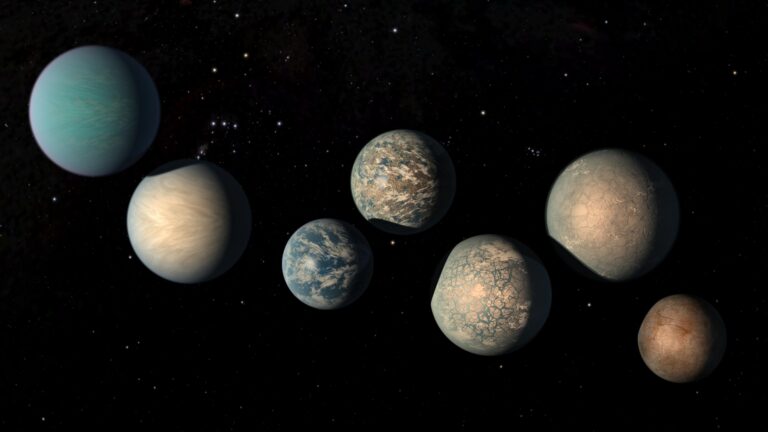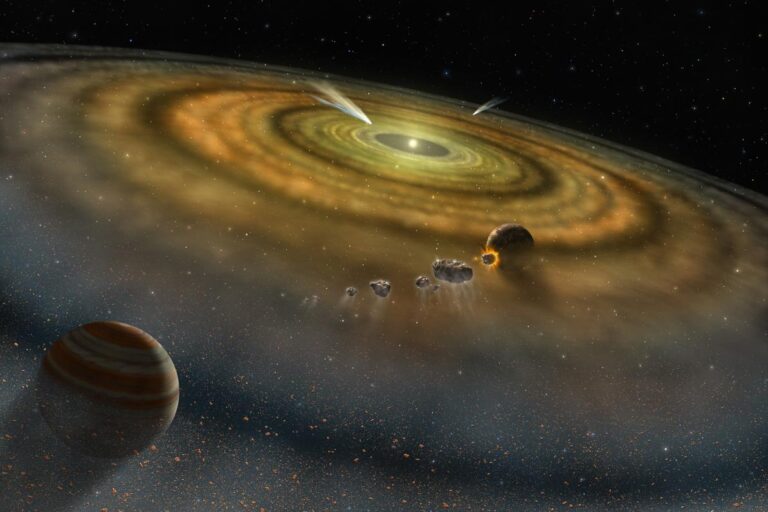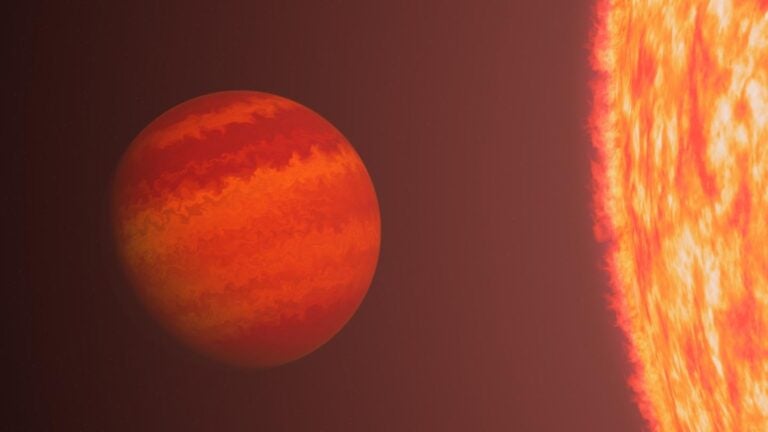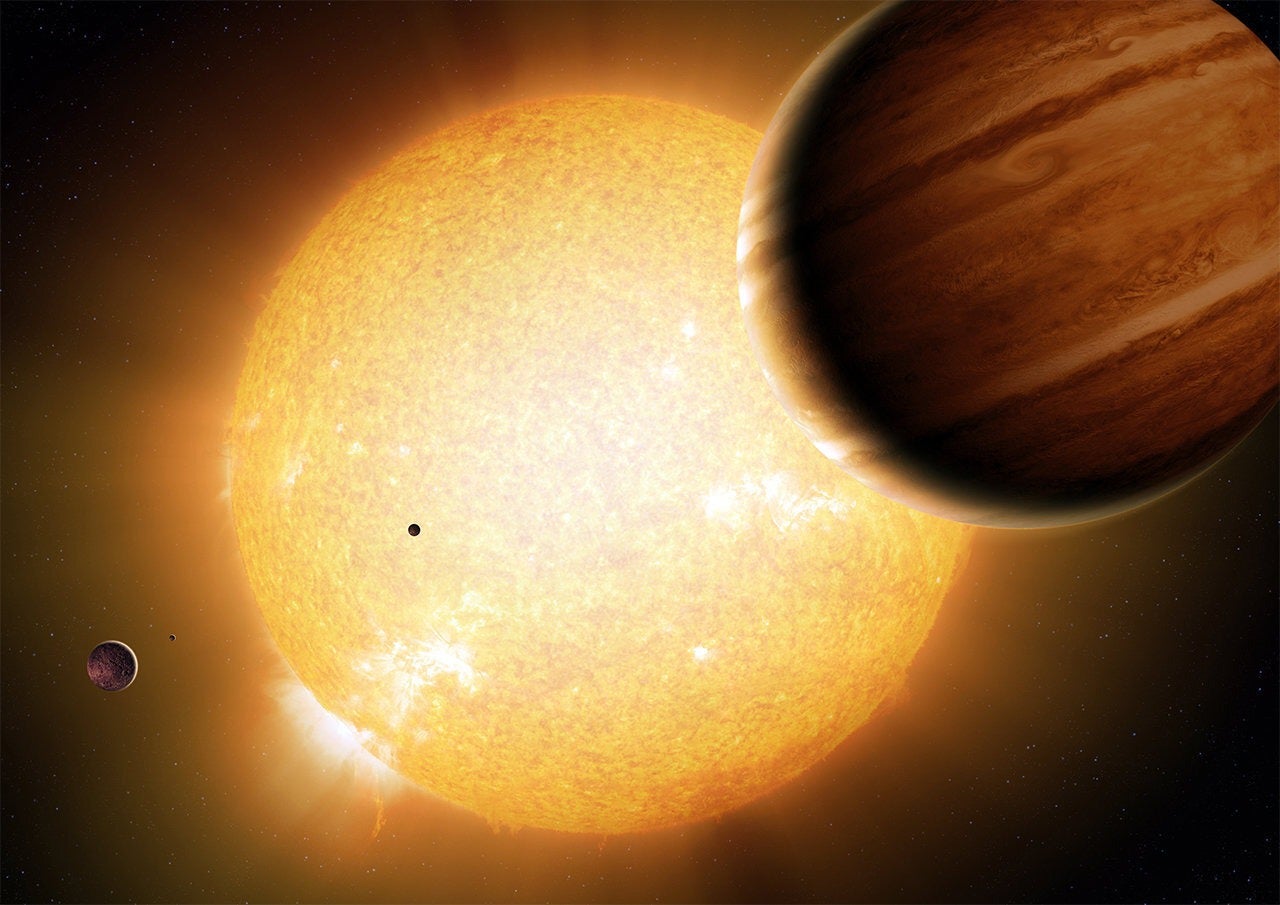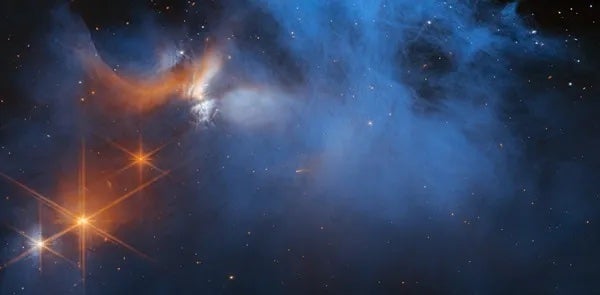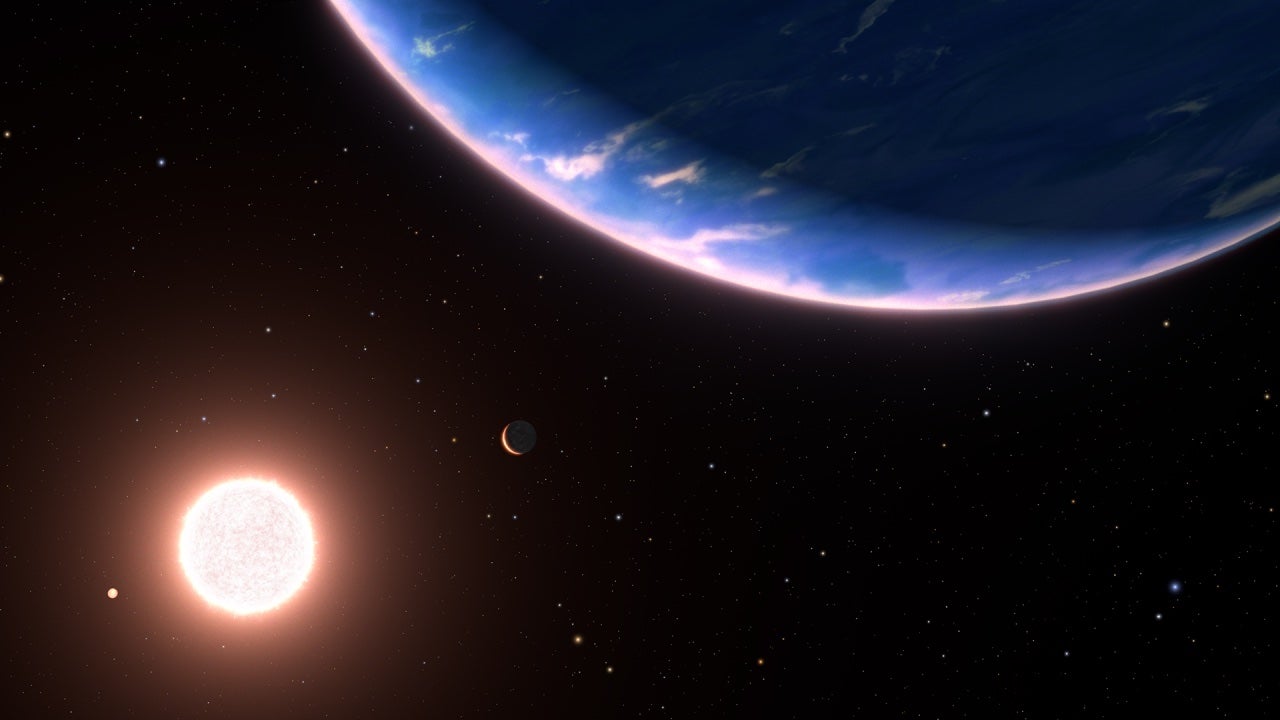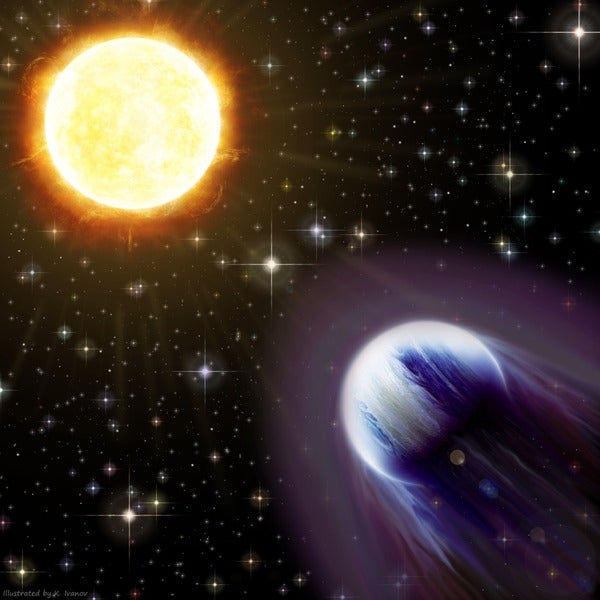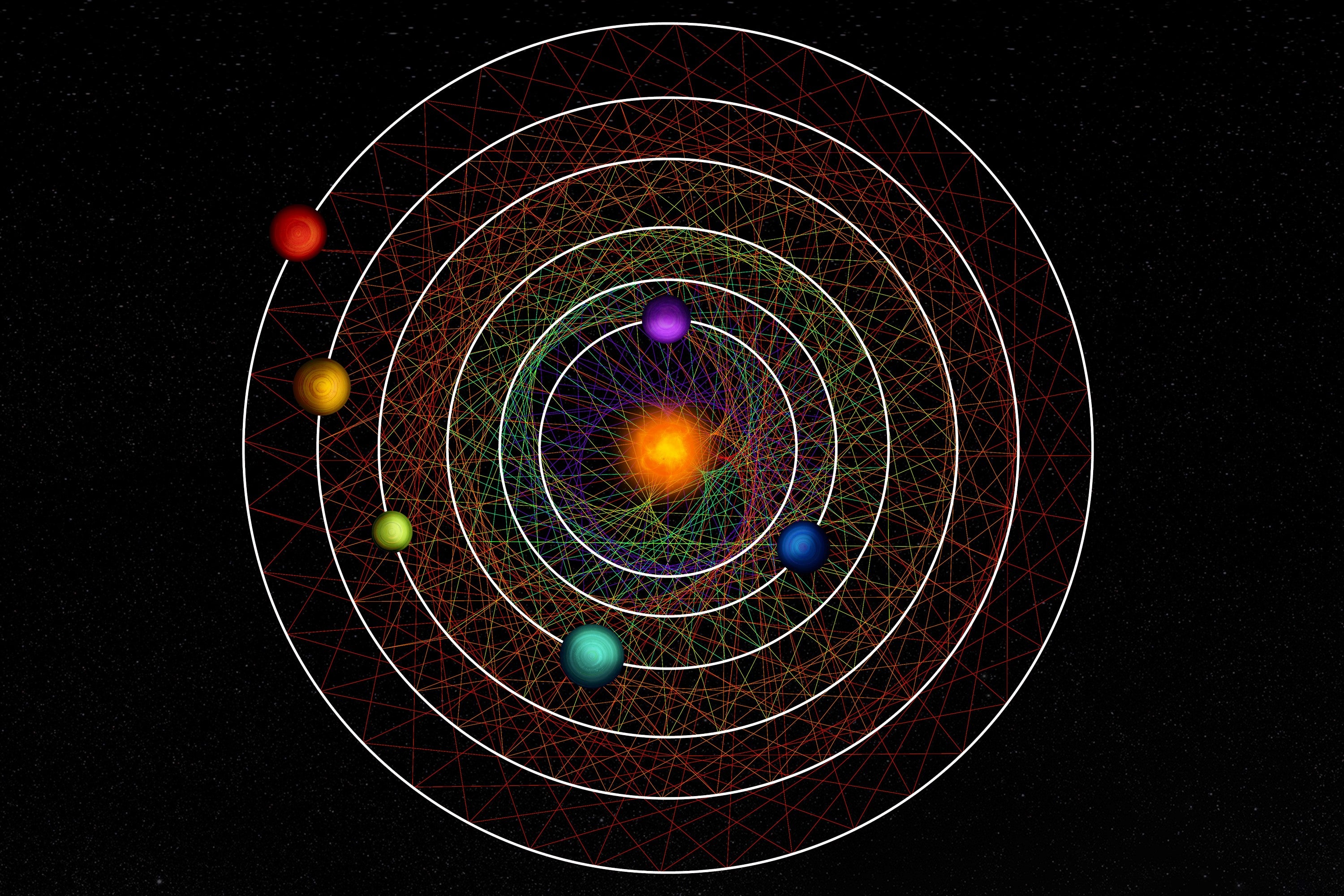
A newly discovered system of six planets circling a nearby Sun-like star may be the key to unlocking how planetary systems form. All between the size of Earth and Neptune, the worlds are orbiting in a so-called resonant chain — a configuration that it’s relatively rare to observe in nature, making the system a valuable find that offers a window into a uniquely “gentle” history.
The discovery was published today in Nature.
Links in a chain
The planets’ path to discovery spawned from an initial detection in 2020 by NASA’s Transiting Exoplanet Survey Satellite (TESS), which searches for dips in brightness as planets cross in front of their parent star. At that time, based on the dips, researchers were able to confirm one planet and posit a second possible world.
But TESS only observes a given patch of sky for about two months before moving on; it doesn’t return for two years. TESS finally observed the star again in 2022, yielding more transits. This revealed a sure second planet, but there were still more transits than could be explained by two worlds.
RELATED: How many exoplanets does the transit method miss?
So, the team turned to a different telescope: the European Space Agency’s CHaracterising ExOPlanets Satellite (Cheops), to observes the star without the limitations of a survey timetable. Using Cheops, they watched for additional transits from further planets. And after five or six observations, “we got a hit, like a battleship,” said study co-author Hugh Osborn, CHESS Fellow at the MIT Kavli Institute for Astrophysics in the U.S. and the University of Bern in Switzerland, during a press briefing Tuesday morning.
They’d found a third planet. Looking at the orbits together, the researchers noticed something intriguing. Each planet’s orbital period was related to the next in line: The inner planet (called b) orbits every 9.114 days, the next planet out (c) every 13.673 days, and the last (d) every 20.519 days. Each of those periods is about 1.5 times the next, meaning the planets are in a configuration called a 3:2 (pronounced “three to two”) mean motion resonance. For every three orbits of the innermost world, b, the next planet out (c) makes two. Then, for every three orbits of c, d makes two.
The team followed the pattern to look for more worlds in this “resonant chain.” First, they modeled how often various additional planets in different resonances would transit, picking out the configurations that were most stable.
Then, they went looking for the transits they expected from those models — and found three more planets: e, f, and g, with periods of 30.793, 41.059, and 54.770 days, respectively. The entire system could fit inside the orbit of Mercury.
In all, the innermost four planets are in a 3:2 resonance. The outer planets f and g are in 4:3 resonance — for every four orbits of the planet interior to it, next planet out makes three full revolutions. Overall, for every six orbits the innermost planet b makes, the outermost planet g makes one full revolution.
“Often we make the predictions and nature finds a way to do something else, to not quite match what we expect,” said Osborn. But in this case, nature was spot-on. Osborn recalled he was “shocked and delighted” when they began spotting planets transiting right when their models suggested: “My jaw was on the floor.”

Seeking sub-Neptunes
The planets circle HD 110067, a star similar to our Sun, with roughly 80 percent its size and mass. It is located in the constellation Coma Berenices, now visible in the early-morning sky in the east above Venus (in Virgo) in the hours before sunrise.
Just 100 light-years away, HD 110067 has an apparent magnitude of 8.4. That makes it the brightest star now known to host four or more planets, outshining the famous red dwarf TRAPPIST-1 by some 10,000 times at optical wavelengths, said Osborn.
Further, TRAPPIST-1’s seven planets are all rocky worlds with thin atmospheres — if any at all. HD 110067’s six known planets have cores of ice or rock but also thick, extended atmospheres of hydrogen and helium. All are some two to three times the diameter of Earth.
The team knows this based on the planets’ densities, which are calculated from size and mass. But transits only give a planet’s size, based on how much light it blocks. To get masses, the team used a different technique, called radial velocity, which measures the subtle “wobbles” in a star induced as orbiting planets tug it this way and that. “You can imagine that with six planets, this was a mess,” said co-author Enric Palle of the Instituto de Astrofisica de Canarias in Tenerife, Spain.
More than 100 radial velocity observations provided enough information to measure three of the planets’ masses, while placing upper limits on the remaining three. And once astronomers know a planet’s size and mass, they can calculate its density, which reveals the type of planet it is — in this case, worlds with some rock and extended atmospheres that are more like Neptune than Earth. Thus, they are called sub-Neptunes. (Neptune is 3.88 times as wide as Earth.) Planets larger than Earth and smaller than Neptune with densities more suggestive of largely rock with a thin atmosphere, such as TRAPPIST-1’s gaggle, are called super-Earths.
Our solar system has no planets of either type, but they are the most commonly found exoplanets when surveying other stars.
RELATED: Where is our solar system’s super-Earth?
A key system
How does a system of planets end up orbiting in perfect mathematical ratios at all? This is likely how planetary systems begin, the team said, reflecting the initial conditions left when the protoplanetary disk that forms the planets eventually disappears. Such resonant chains should be exceedingly common in nature — but they’re not. That’s because over time, chaotic events such as passing stars, meteor impacts, and wandering giant planets muddy any resonances until they are gone.
But HD 110067’s resonant chain has persisted for the billions of years since these planets formed, indicating “the evolution of this system has been very quiet, very gentle,” said lead author Rafael Luque of the University of Chicago.
Ultimately, about 1 percent of all planetary systems are still orbiting in resonance. We know of some 40 or 50, the team said. And this isn’t the first six-planet resonant system discovered.
Yet HD 110067 still stands out. In addition to its pristine orbital configuration, the star is very bright and there are six planets, all with substantial atmospheres. This makes it a prime target for the James Webb Space Telescope to peer through the atmospheres of these planets as they transit, looking for the presence of molecules such as methane, carbon dioxide, water, and ammonia. Doing so will not only tell us the composition of the planets’ atmospheres, but also their interiors as well, including whether they might contain plentiful water.
Perhaps most compelling, this system provides the perfect testbed for studying how sub-Neptunes form and planetary systems evolve without outside influences. Each of the six planets formed from the same material, started from the same initial conditions, and has experienced the same history as its peers. Astronomers can compare these worlds to each other to study how subtle differences in size, mass, temperature, and distance from their star might affect the evolution of planets in the absence of any other factors.
In HD 110067 and its planets, Luque said, astronomers have a single, perfect testbed — a “controlled experiment … that is going to set us up to learn so much in the coming years.”
Editor’s note: An earlier version of this story mistakenly stated that for every three orbits of c, d makes three.



